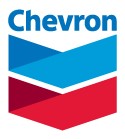The cover letter is a letter attached to your resume that articulates how your resume aligns with the job description. Just as how a resume helps you land an interview, a cover letter should pique the interest of your reader so they are interested in your resume. Cover letters give the reader a clearer context of your resume and how your strengths can fulfill their needs.
Let’s talk about the structure of a cover letter. A cover letter should be a separate document to the resume, and be no longer than one page. The contents of the cover letter should generally follow this three paragraph outline. Download our cover letter template here!
The first paragraph is where you will identify your intentions. You should include:
- What work/position are you currently applying for?
- What was your method of identifying this job opportunity?
- Personal referrals offer the strongest connections to the company
- Organization website
- Job search site
- Business experience
- Why do you want to be a part of this company?
- What part of their organization attracts you to their company?
- What strategies does this company use that intrigue you?
- What about their core product is interesting to you?
The second paragraph should show the reader how you could align with the goals and needs of the company, answering the question, “Why should we hire you?”
- Let the employer know how you can fulfill their needs and match the job position by matching your experiences to 2 or 3 specific qualifications mentioned in the job posting.
- Refer back to the job description to let the employer see that you understand what the company is seeking.
- Include relevant information that is not on your resume.
- If you have specific qualifications or experiences that might be of interest to the employer or applicable to the job, you should also add them here.
- Show how the expertise you demonstrated in your resume will add value to the team.
- Explain how you can solve their problems/drive profits/use your skill sets to benefit the company.
- Bring up past examples of success if you can!
The third paragraph is the closing paragraph.
- Once again, you reiterate your interest in the company and the specific position you want.
- Express your interest in an interview with the organization and include the best time to contact you.
- Provide reliable contact information such as your email and cell phone number.
- Be sure to state your plans to follow up with the recipient in a timely manner, showing that you are a proactive applicant.
The cover letter is completed with a complimentary close, followed by a hand-written signature, with your typed name at the very end.
Cover letters for academic jobs may have different requirements. Here is our cover letter worksheet for academic jobs, including research positions and teaching positions!
Here are some Do’s and Don’ts of cover letters:
Do:
- Do address the reader personally, with correct gender and name spelling.
- Do personalize each cover letter to the position and organization you are applying to.
- Do be specific in your letter, including accomplishments and what you want to do for the company.
- Do use concise language, active verbs, and a neat format.
- Do research to find what you can include in the cover letter that the job posting may not have mentioned.
Don't:
- Don’t exceed one page.
- Don’t have grammatical or spelling errors.
- Don’t forget to sign your letter.
- Don’t use informal language or Aggie-centric language, such as starting the letter with “Howdy!”
- Don’t include inappropriate information, such as an unprofessional email address or personal information.
- Don’t compliment the company too much, since they know their strengths. Instead, focus on how you can help the company fulfill their needs.
